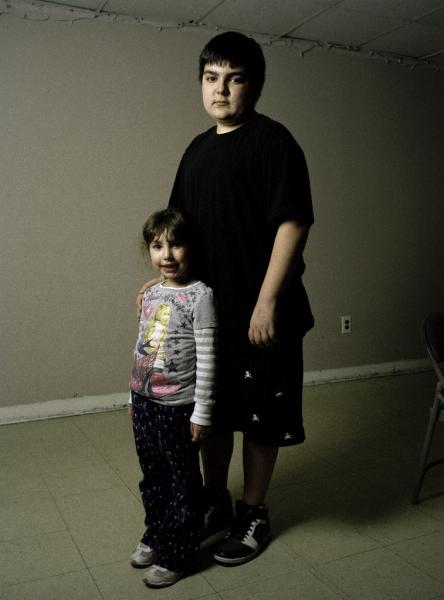A ceramic eagle. Beatriz Costa’s books. Vinyl records by João Villaret, Amália Rodrigues, Maria Albertina, Fernando Farinha. Dialogues by Lélé and Zequinha. A sepia print of Our Lady of Fátima. These are the nostalgic memories of the Portuguese emigrant community in Parkville, Hartford, Connecticut, where, at the beginning of the 20th century, men went to work in the foundries or typewriter factories, and women found jobs in clothing factories.
New World Parkville began in 2009, with a public art project, commissioned by Real Art Ways, an alternative arts organisation in Hartford. Margarida Correia immersed herself in the Portuguese emigrant community, and met people like radio DJ Manuel Gaspar and João Alves, the son of Fado singer Maria Alves. She listened to their stories and researched their personal archives.
New World Parkville was originally presented in banners displayed in the streets of this American neighbourhood, and at the entrance was placed a large poster with a picture of Nazaré beach, named by many emigrants as one of their strongest photographic recollections of Portugal.
The exhibition will be held in the Electricity Museum between 22 July and 18 September 2011.
THE ARTIST
Margarida Correia was born in Lisbon, in 1972. She lives and works in New York.
She has a Master’s Degree in Photography from the School of Visual Arts, in New York, graduated in Painting at the Faculty of Fine Arts, Lisbon University, and a BA in Visual Arts from the School of Art and Design from Caldas da Rainha, Portugal. Her first solo exhibition, Shining, was held at Lisbon’s Faculty of Fine Arts (1998), and more recently she presented Ofício at the São Roque Museum, in Lisbon (2010) and New World Parkville, at Real Art Ways (Hartford, USA, 2009). Among the most recent collective exhibitions in which she took part are Gallery Registered, White Columns (New York, 2009); Hanging Out at No Rio, ABC No Rio (New York, 2009); Portrait Show, Vermont Center for Photography (Vermont, USA, 2008); In the Country of Last Things, Aferro Gallery (New Jersey, USA, 2008); How Soon is Now? , Bronx Museum of The Arts (New York, 2008).
“WHERE IS MY HOMELAND?
Is perhaps the question which the central figures in these photographs ask themselves. But it is also a question we, who are looking at them, might be asked. I might have written: we, who are looking at them ‘from the outside’. But the discrimination implied by such a formulation leads us to treading carefully.
It’s true that the Portuguese reality, no matter what shape it might take in each person’s imagination, acts as an unequivocal symbolic reference. But it only punctuates their lives at particular places/moments, it does not permeate their American daily life. The latter is dictated by scheduled times, programmes, local laws and rules. Let us just say that makes them Portuguese people living ‘out there’.
However, all the references witnessed by these photographs point to Portugal, a mythical entity which is unclearly defined. For example, when they produce, sing and listen to Fado, or radio programmes featuring Portuguese music and topics; when they dance to the sound of and according to choreographies and costumes taken from a set of folklore stereotypes assumed as Portuguese; when they develop religious practices based on customs brought from Portuguese territory (from worshipping the Holy Spirit to Fátima); when they maintain links to the language, native lands, non-emigrated family members; when they marry their own people and perpetuate food rituals. (…)
The manner in which Margarida Correia approaches the faces/bodies and the props in each of the four sets of figures is significant. On the one hand, she shows us three individual portraits. They are not ‘passport photos’, but the setting is the same as is traditionally used when painting portraits, which studio photography has maintained and recovered. By revealing the indoor spaces, she helps us to build the individuals personality. (…)”
João Pinharanda, commissioner








